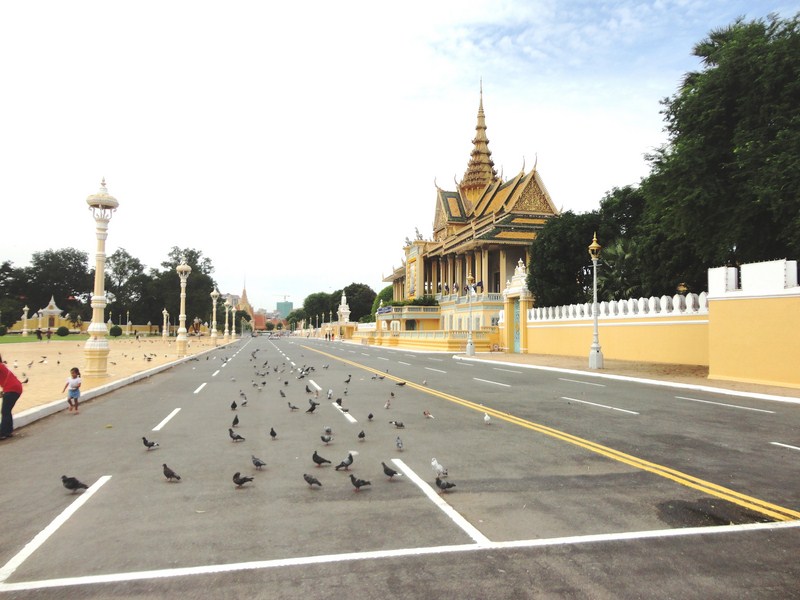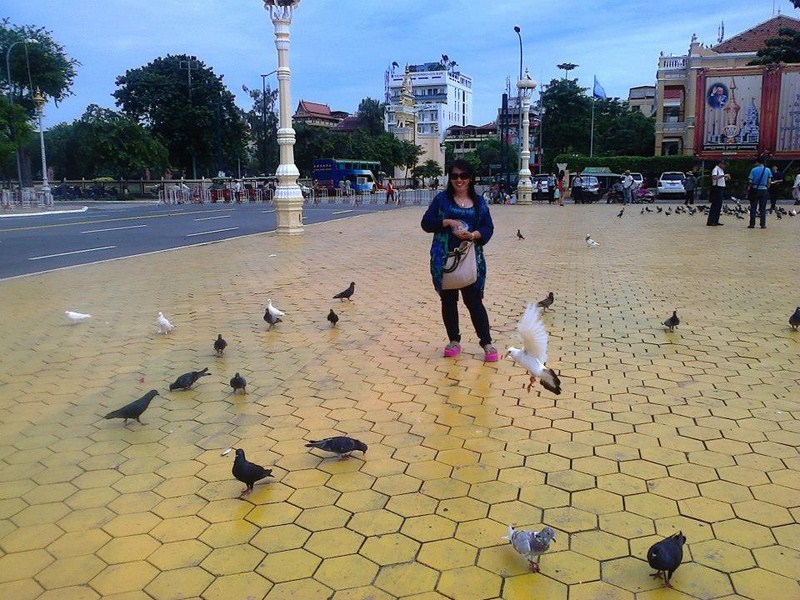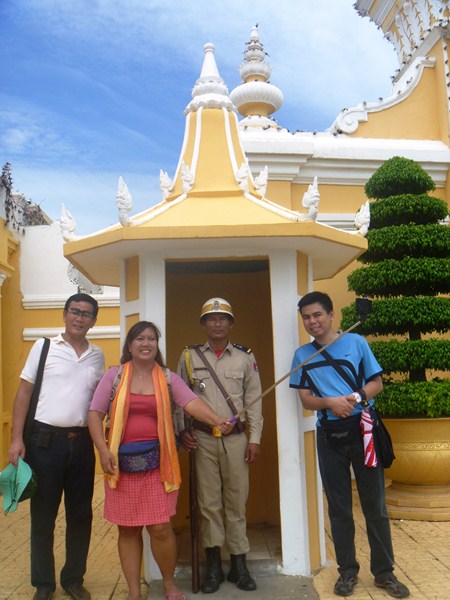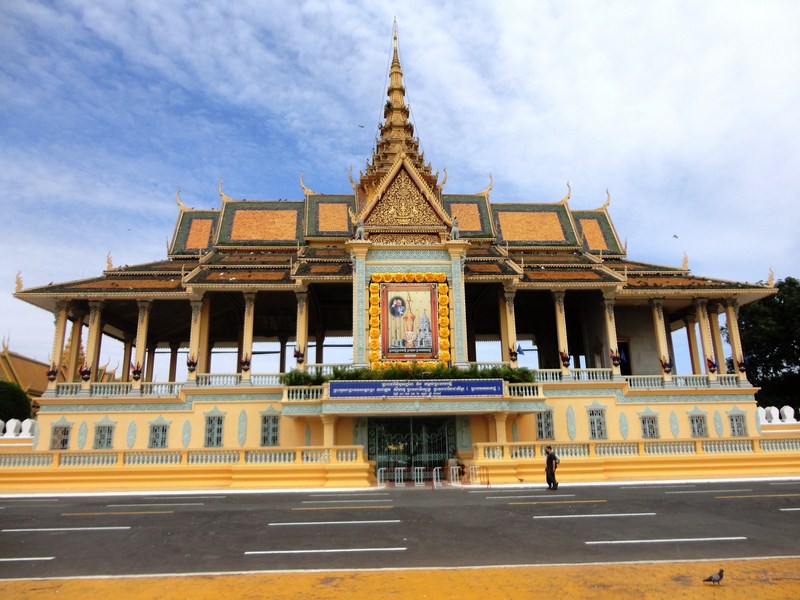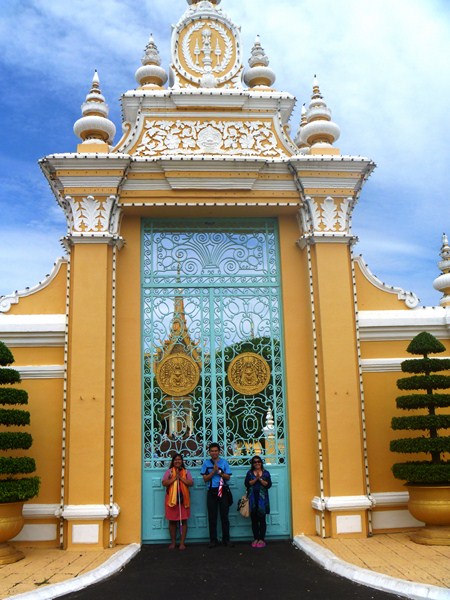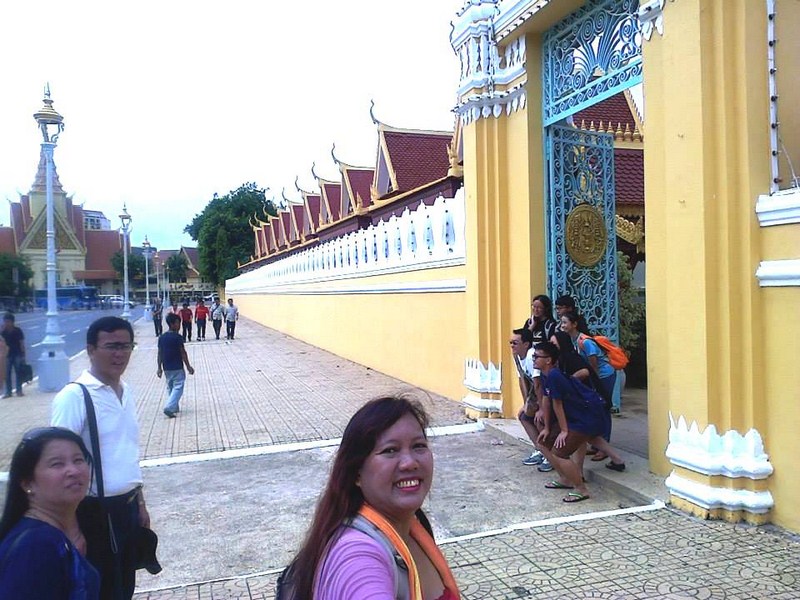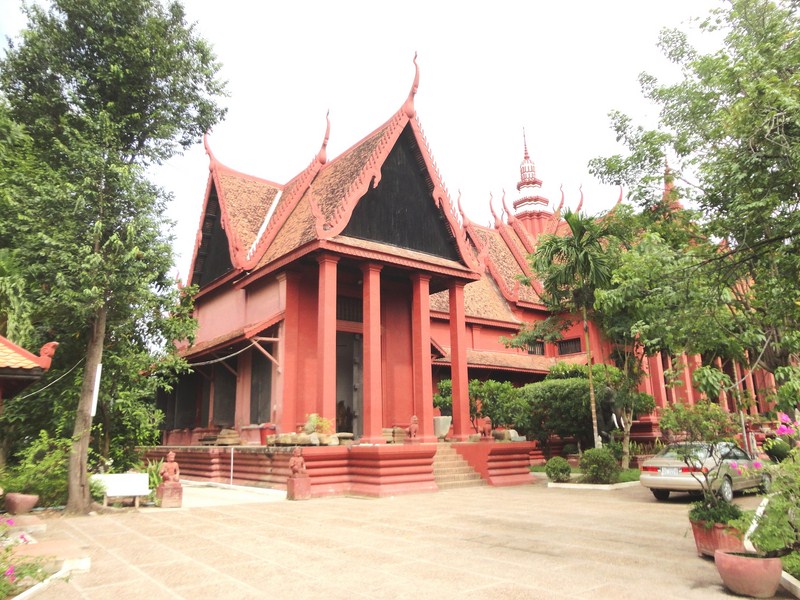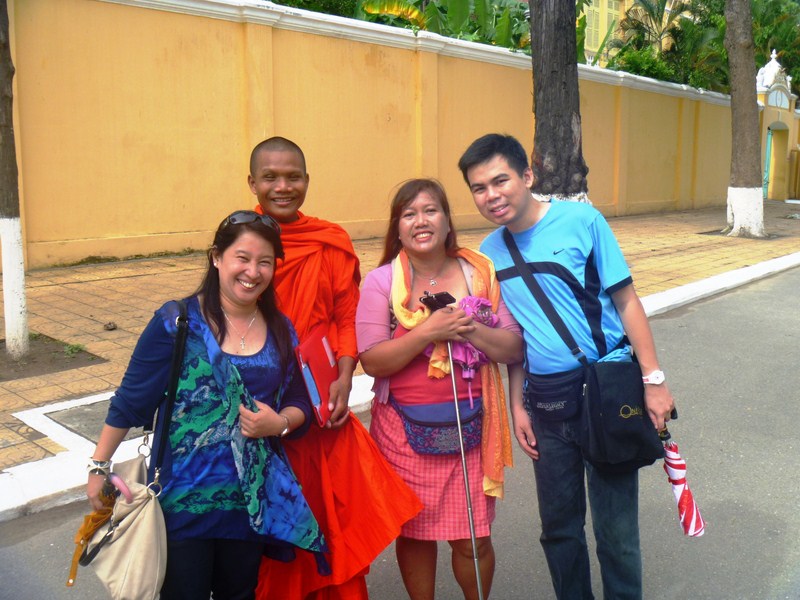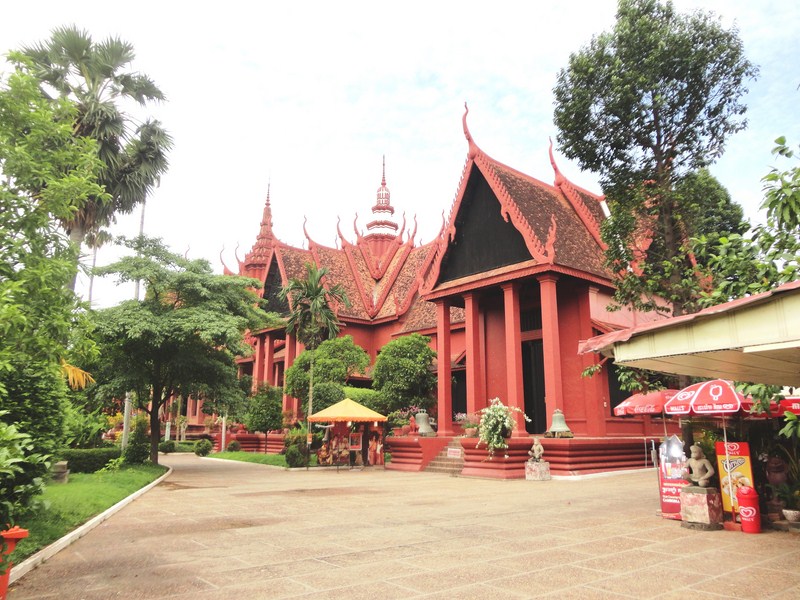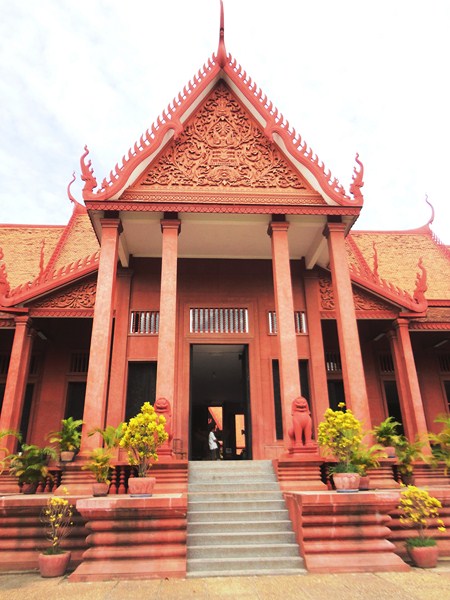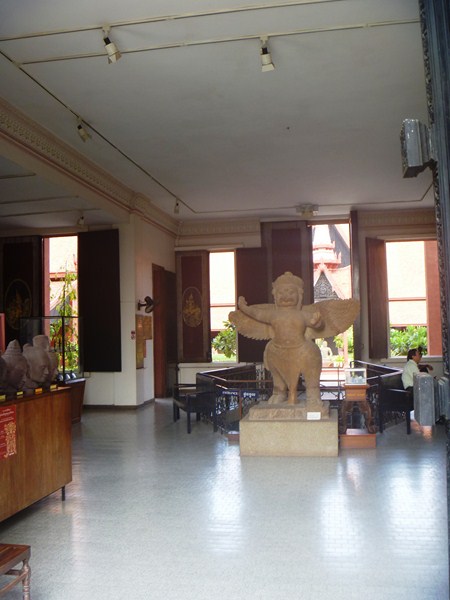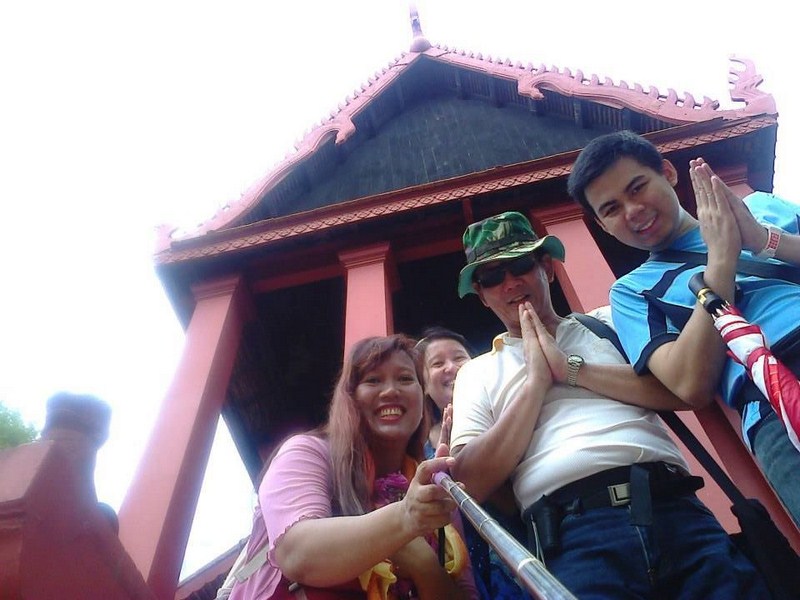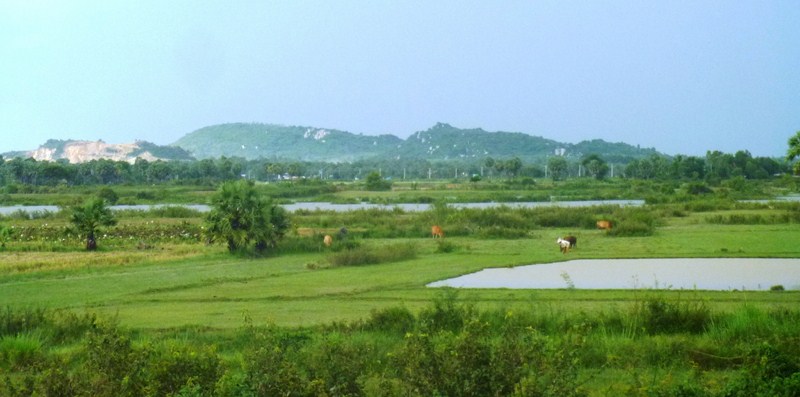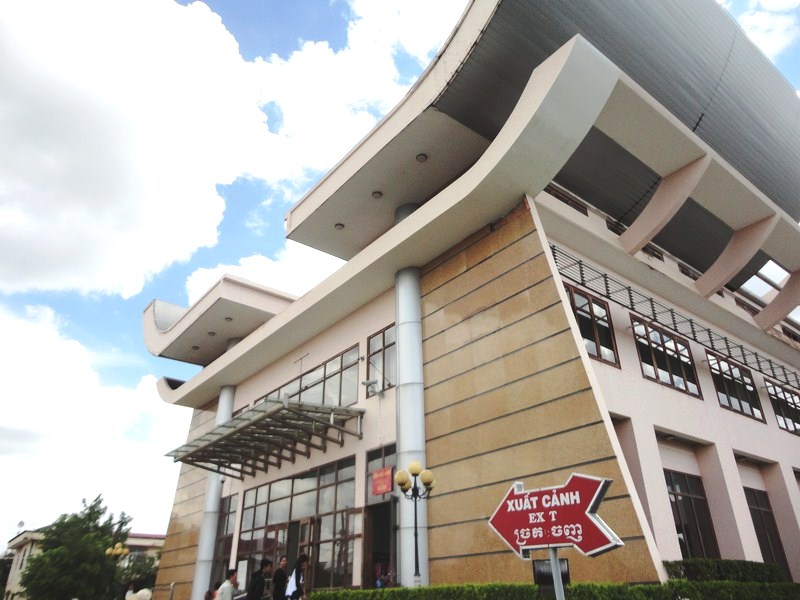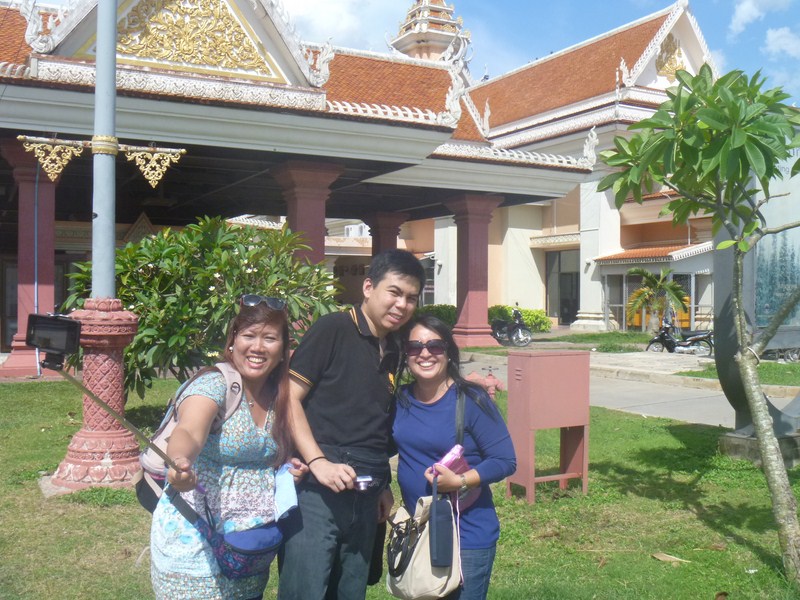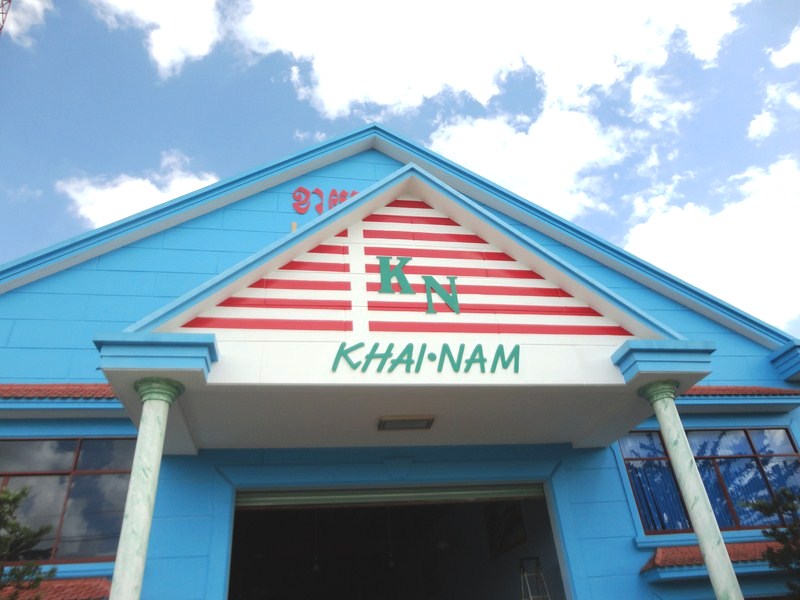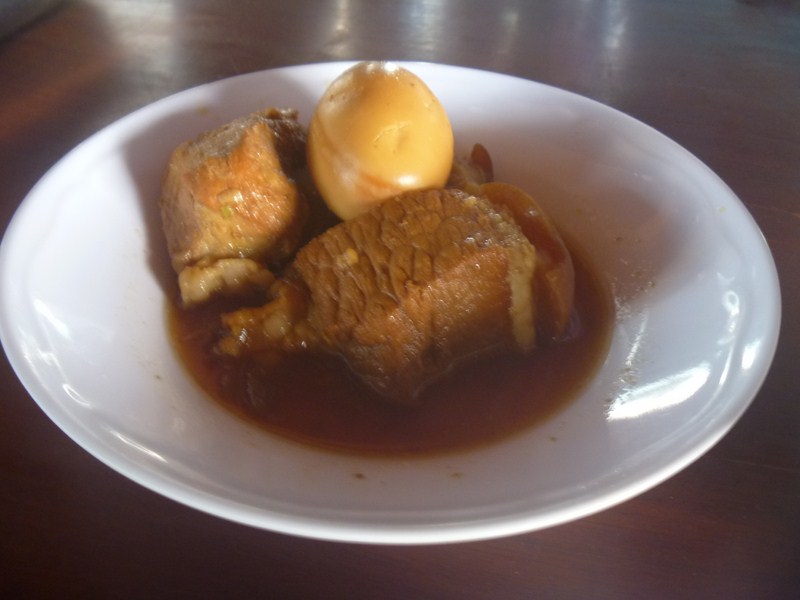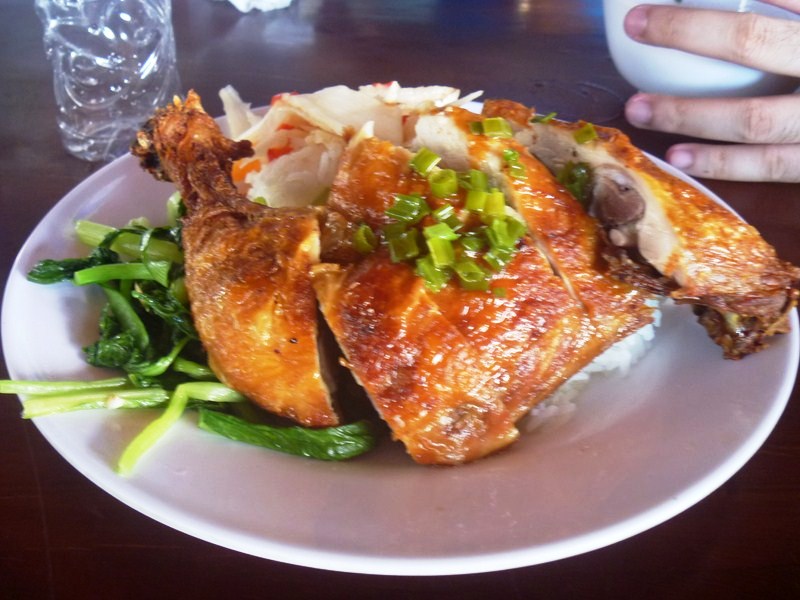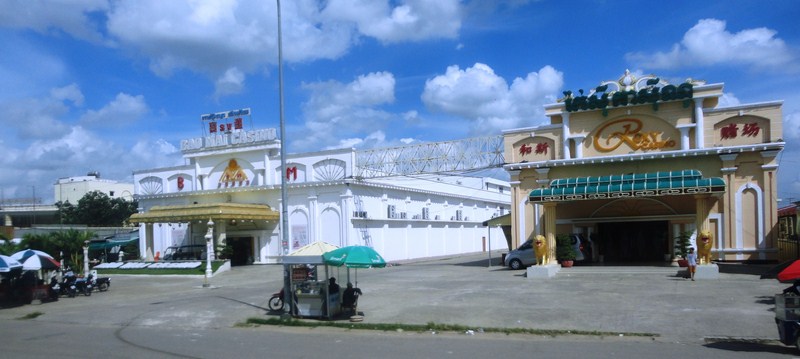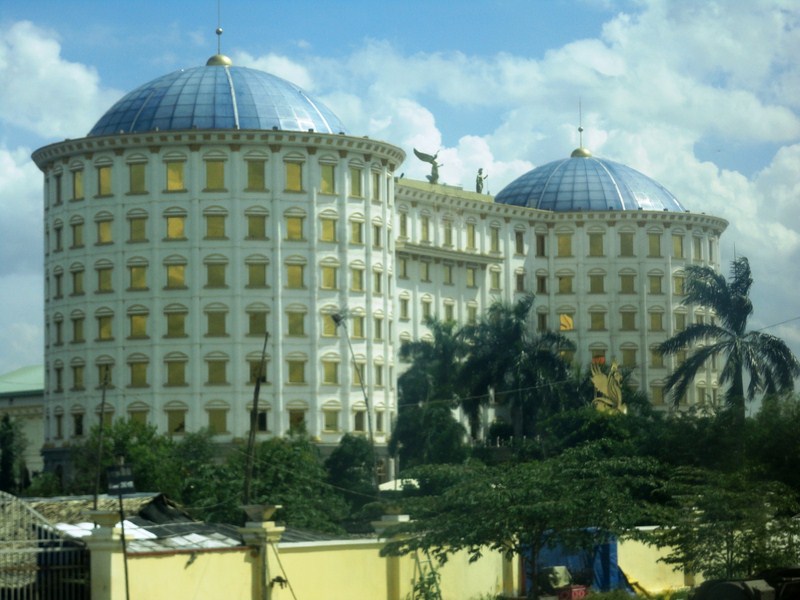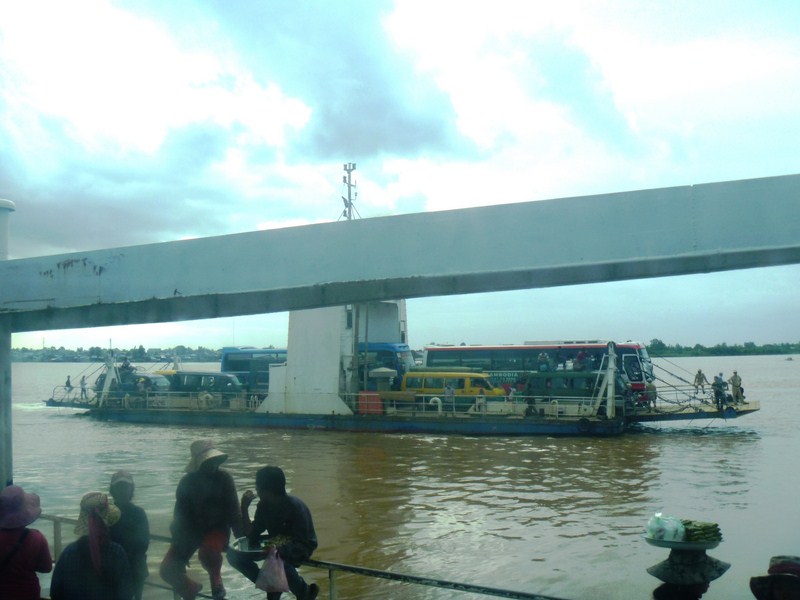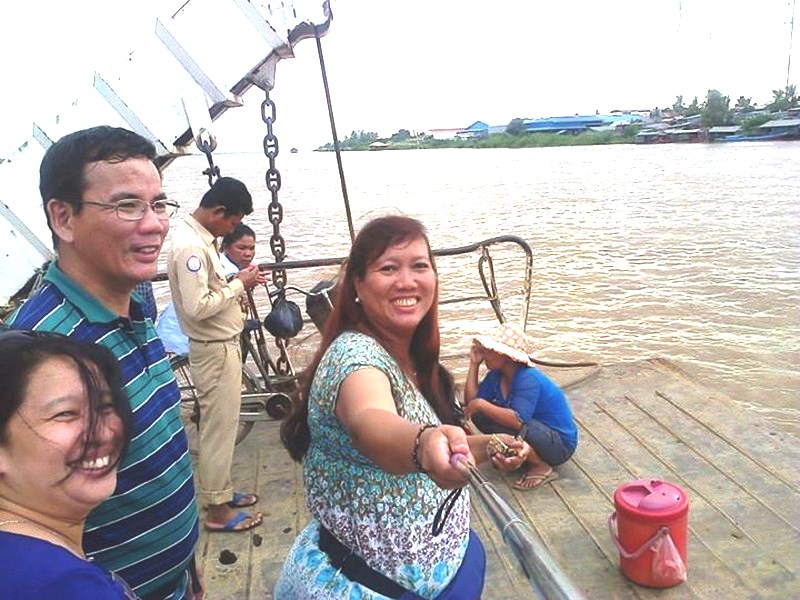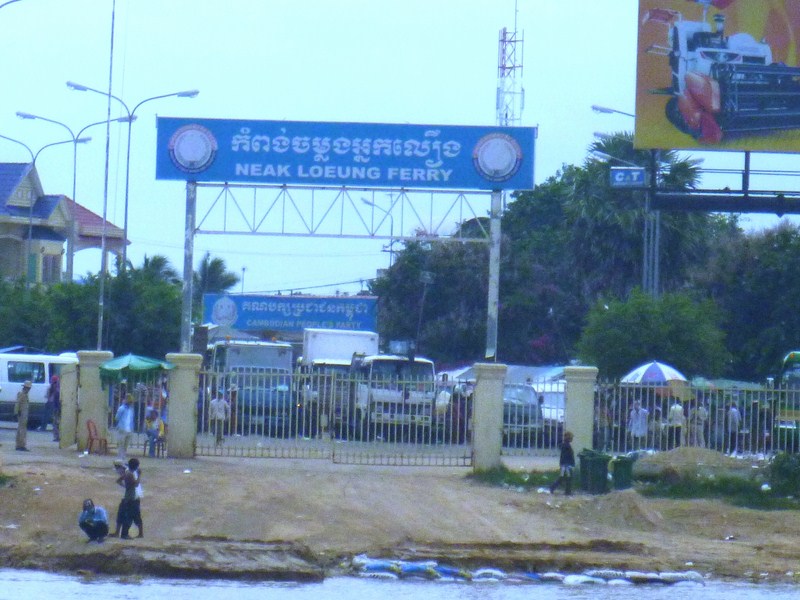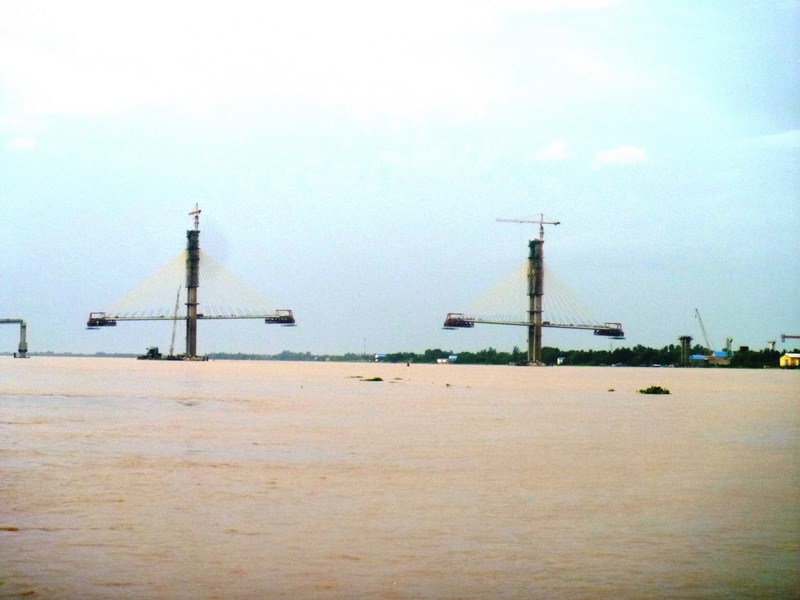After our short visit to the National Museum, Osang, Violet, Jandy and I proceeded on our way to the nearby Royal Palace. The Royal Palace, a good example of Khmer architecture, covers an area of 174,870 sq. m. (402 m. x 435 m.). Its layout features a defensive wall (kampaeng), throne hall (preah tineang), Temple of the Emerald Buddha (Wat Preah Keo Morakot), stupas (chedei), towering spires (prang prasat) and mural paintings.
The complex is divided by walls into four main compounds. On the south side is the Silver Pagoda, on the north is the Khemarin Palace, on the west is the private sector (or the Inner Court) while the central compound contains the Throne Hall . The buildings of the palace were gradually built over time, some were dismantled and rebuilt as late as the 1960s, but some old buildings date back to the 19th century.
From Street 184, we turned right to the surprisingly car-free (save for one tourist bus) Preah Sothearos Blvd. On its left is a wide promenade with yellow hexagonal floor tiles. Here, flocks of black, white and gray doves congregate. Children enjoy chasing them while adults feed them with corn kernels and peanuts bought from vendors nearby. Beyond the promenade is a small park, Sisowath Quay and the mighty Mekong River.
On the boulevard’s right are the high, yellow crenelated walls of the Royal Palace. We passed two guardhouses, one of them manned, gamely posing with the guard on duty. The open-air Preah Thineang Chan Chhaya (“Moonlight Pavilion”), built alongside a section of the palace walls, dominates the facade.
One of the most notable buildings of the Royal Palace, it serves as a venue for the Royal Dancers, as a tribune for the King to address the crowds and as a place to hold state and royal banquets. During the 2004 coronation of King Norodom Sihamoni, it was used for a banquet and a tribune for the new king. It also has a balcony that is used for viewing parades marching along Sothearos Boulevard.
Past the pavilion is the Victory Gate which faces the entrance steps leading to the palace’s Throne Hall. Traditionally, this gate was only used by the king and queen though it is now used to admit visiting dignitaries. As such, this gate was locked. However, the entrance for tourists wanting to tour the palace was nearby. Upon entering, we walked along a short corridor to the ticket booth.

